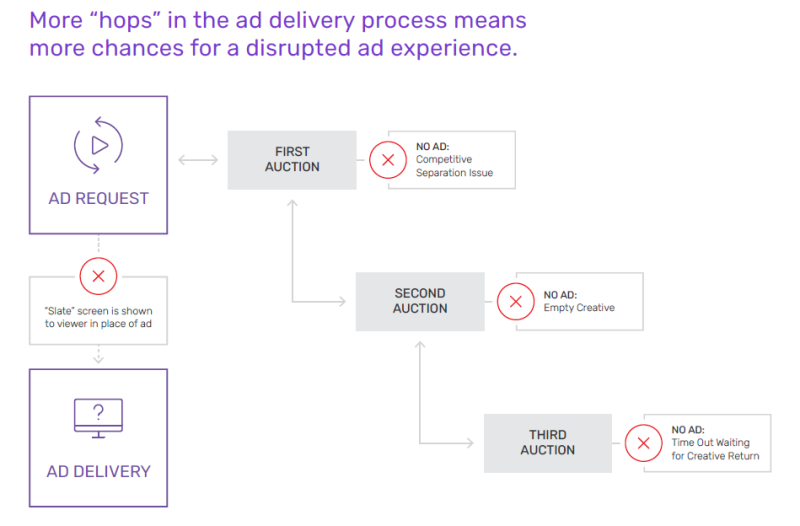Comcast’s FreeWheel unit on Wednesday unveiled a new effort to improve the TV ad viewing experience, announcing the launch of The Viewer Experience Lab in partnership with MediaScience.
FreeWheel will utilize the new lab both to conduct research into how viewers respond to ad formats and develop new solutions that help media company customers ensure a positive and high-quality ad experience across what has become a very fragmented viewing and buying experience.
“Over the past few years, the ability for media companies to provide a uniform, quality experience across all of the diverse platforms into which they now serve advertising has grown exponentially harder,” said Mark McKee, general manager at FreeWheel, in a statement. “Couple this with the reality that protecting their relationship with viewers has become paramount in an increasingly competitive ad marketplace, and you can see why we’re committed to helping our clients solve this complex challenge.”
For FreeWheel itself, part of the aim of the lab is to expand and build up its portfolio within its viewer experience product category. The company already offers products that feature VX capabilities such as dynamically adjusting ad load based on time spent viewing, a dynamic ad scheduler for CTV and frequency capping abilities across devices in the same household.
In announcing the lab, FreeWheel pointed to challenges of dynamically serving advertising on streaming platforms including AVOD and FAST, such as latency and over frequency (or seeing the same ad multiple times), as well as cross-platform including on linear.
The ad-tech unit identified two goals of The View Experience Lab:
- Conduct quantifiable research to help buyers and sellers understand the impact of different ad experiences on viewer experience and performance, including response to new formats
- Create solutions and interoperable technologies driven by the findings to allow video content providers to implement best practices
The new lab has support of advisors from major programmers that are part of the FreeWheel Council for Premium Video, including A+E Networks, AMC, Fox, Paramount, Warner Bros. Discovery and NBCUniversal.
Evan Adlman, EVP of commercial sales and revenue at AMC Networks, said the programmer is thrilled to partner with FreeWheel while touting the importance of consumer experience insights.
“Our viewer relationships are at the center of everything we do as a media company and the unique value we are able to deliver to our advertising clients. These relationships are rooted in a viewer-first strategy across a broad, ad-supported distribution ecosystem that spans linear networks, streaming services and emerging, connected TV/FAST platforms,” said Adlman in a statement. “We are focused on offering the best data targeting capabilities across all of our inventories, so having insights into the consumer experience that allow us to deliver the best products is invaluable in this dynamic and changing environment.”
Initial findings
As part of its initial work The Viewer Experience Lab released a State of TV Advertising Viewer Experience report that, among other findings, laid out five factors contributing to complexity in achieving a positive ad experience on streaming.
Among the factors are hypertargeting, which can narrow audiences too far, meaning the same people see the same ad; accessibility; walled gardens; sales channels conflicts; and finally, too many so-called “hops.” The final factor is what FreeWheel said is potentially the biggest issue – in that there’s an increase in “stops” on the way for an ad to be delivered in many programmatic scenarios – where a traditional TV ad pod is usually direct from advertiser to programmer, programmatic pods may be subject to things like auctions, exchanges, and ad calls, which FreeWheel said creates more chances for dings to the viewer experience.

While FreeWheel says consumers are ok with ads, but a positive experience correlates with minimum disruption – which can come in the form of repeated ads, ad breaks that are overly long, how much downtime between ads, and ads that are inserted into content where they might not naturally fit.
“There needs to be a win-win scenario both for audiences and advertisers,” said Dr. Duane Veran, CEO of Media Science. “The audience needs an experience they can enjoy and the marketer needs to effectively market. That should be our paramount objective.”
As to quantity of ads, an analysis of the FreeWheel platform found that around 66% of streaming ad lengths shown in the middle of content are typically less than three minutes, which is on par with linear TV experience. That said, nearly a quarter are more than four minutes or longer, which it determined is arguably a long while for ads all at once. Still, FreeWheel said more research is needed to determine the optimal balance of ad monetization of content and the viewing experience.
As for seeing the same ad over and over again, perhaps unsurprisingly most (67%) viewers are annoyed at seeing the same ad more than once within an ad break. Interestingly, the report found that among premium video content the same ad is repeated only about 10% of the time on ad-supported streaming – but the amount of repetition varies widely by publisher and program.
Frequency capping is a way to address ad repetition, but while 54% of campaigns had frequency caps in Q1 2023, it still means nearly half of all streaming ad placements didn’t employ frequency capping at all, per the report.
FreeWheel also found that up to 25% of ad avails on FASTs channels aren’t filled, meaning viewers are essentially getting a blank screen that disrupts the experience and the publisher is losing out on ad revenue for underutilized inventory.
Aside from the initial report, FreeWheel and MediaScience have started work on analysis into consumers’ responses to viewer experience stimuli in a lab environment, and plans to provide best practices to the industry with findings expected in January 2024.